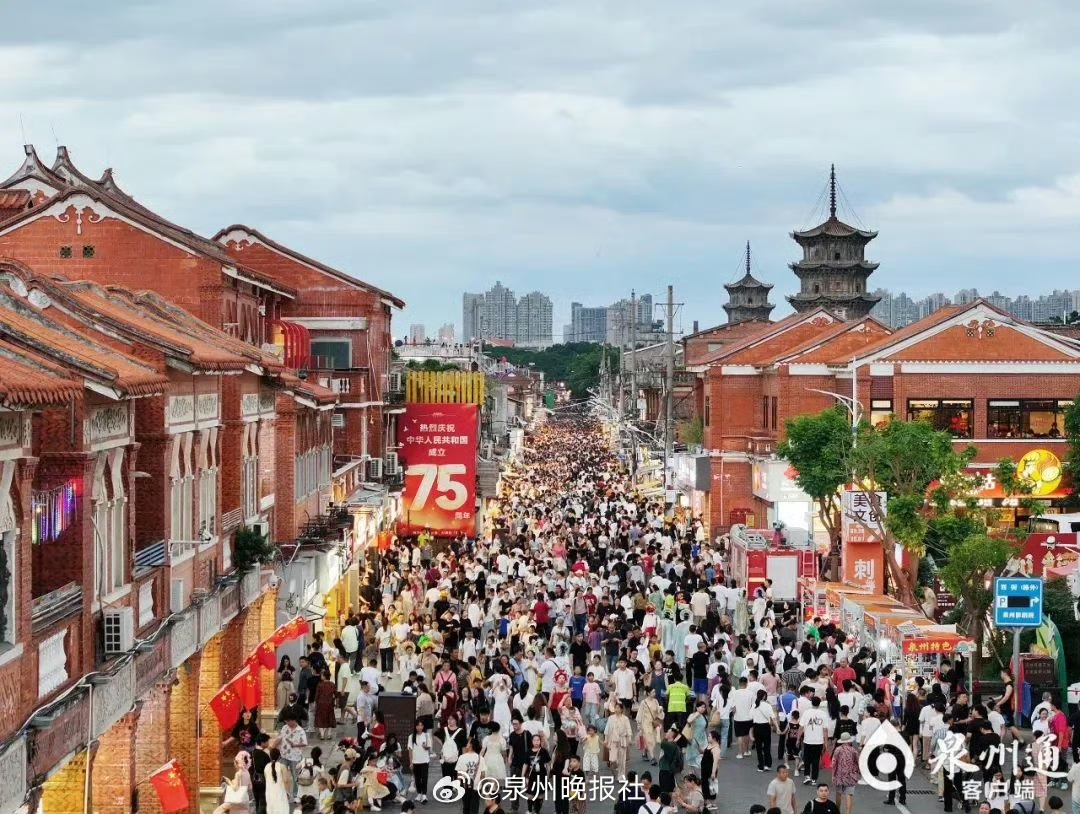Located in Quanzhou, Fujian Province, Dehua County is one of China’s most historic porcelain-producing regions, with a ceramic-making history that dates back to the Neolithic era. Dehua white porcelain is renowned worldwide for its jade-like whiteness and smooth, creamy texture. As early as the Song and Yuan dynasties, it was exported to Europe via the Maritime Silk Road. During the Ming dynasty, Dehua white porcelain frequently fetched prices in the tens of millions at major auctions. The elegant moniker “Blanc de Chine” was coined by the French in admiration of Dehua porcelain from the Ming era.
This summer, high-profile exhibitions themed around “Blanc de Chine” Dehua porcelain are being held simultaneously in both Beijing and Shanghai:
In Beijing, the Tsinghua University Art Museum is hosting “White and All: China Dehua White Porcelain Exhibition” from July 16 to August 17. The exhibition features over 90 exceptional pieces of Dehua ceramics, showcasing the millennium-long artistic heritage of “Blanc de Chine.”
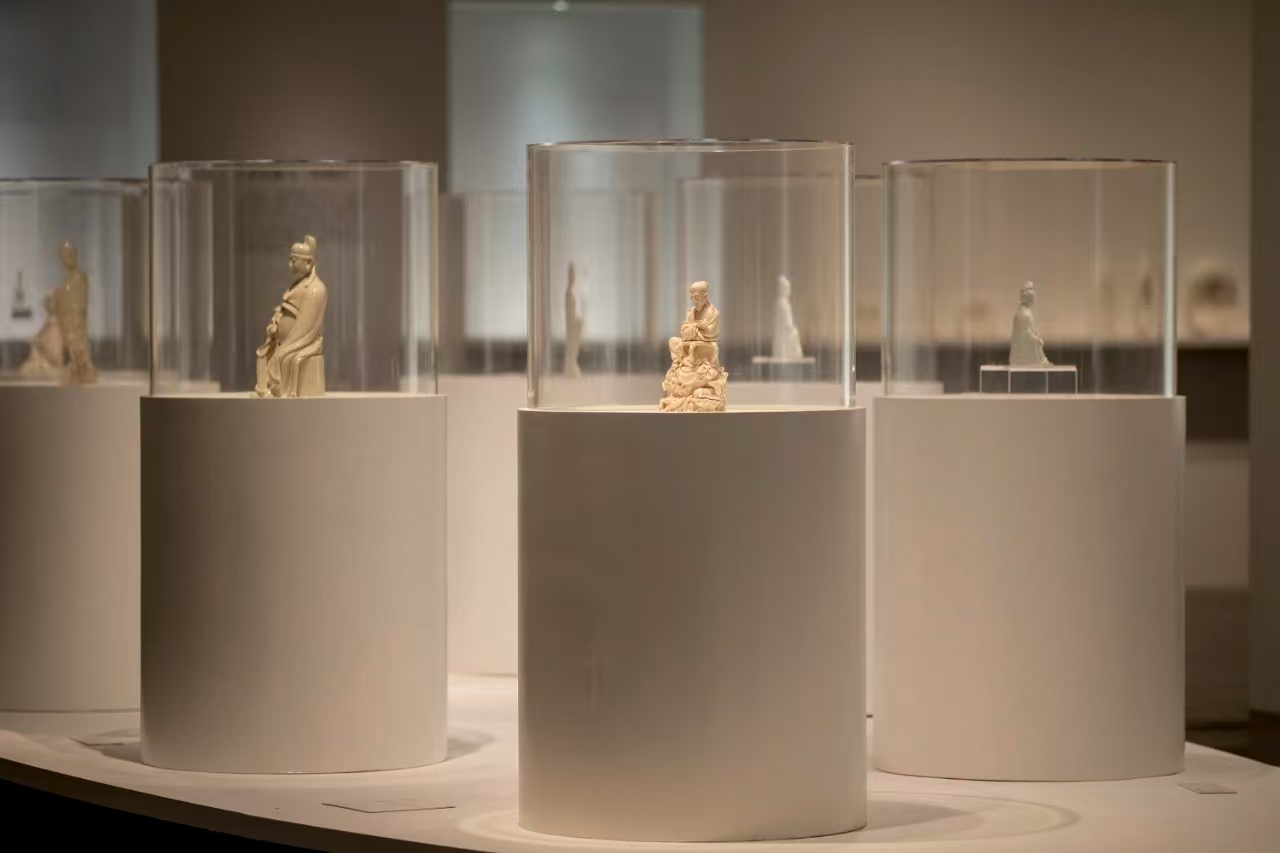
In Shanghai, the “Blanc de Chine: Dehua Porcelain” Grand Art Exhibition opened on July 18 and will run through September 19 at the China Art Museum (Shanghai Art Museum). With more than 200 exquisite white porcelain pieces on display, it is the largest and most culturally significant Dehua porcelain exhibition held in Shanghai in recent years.
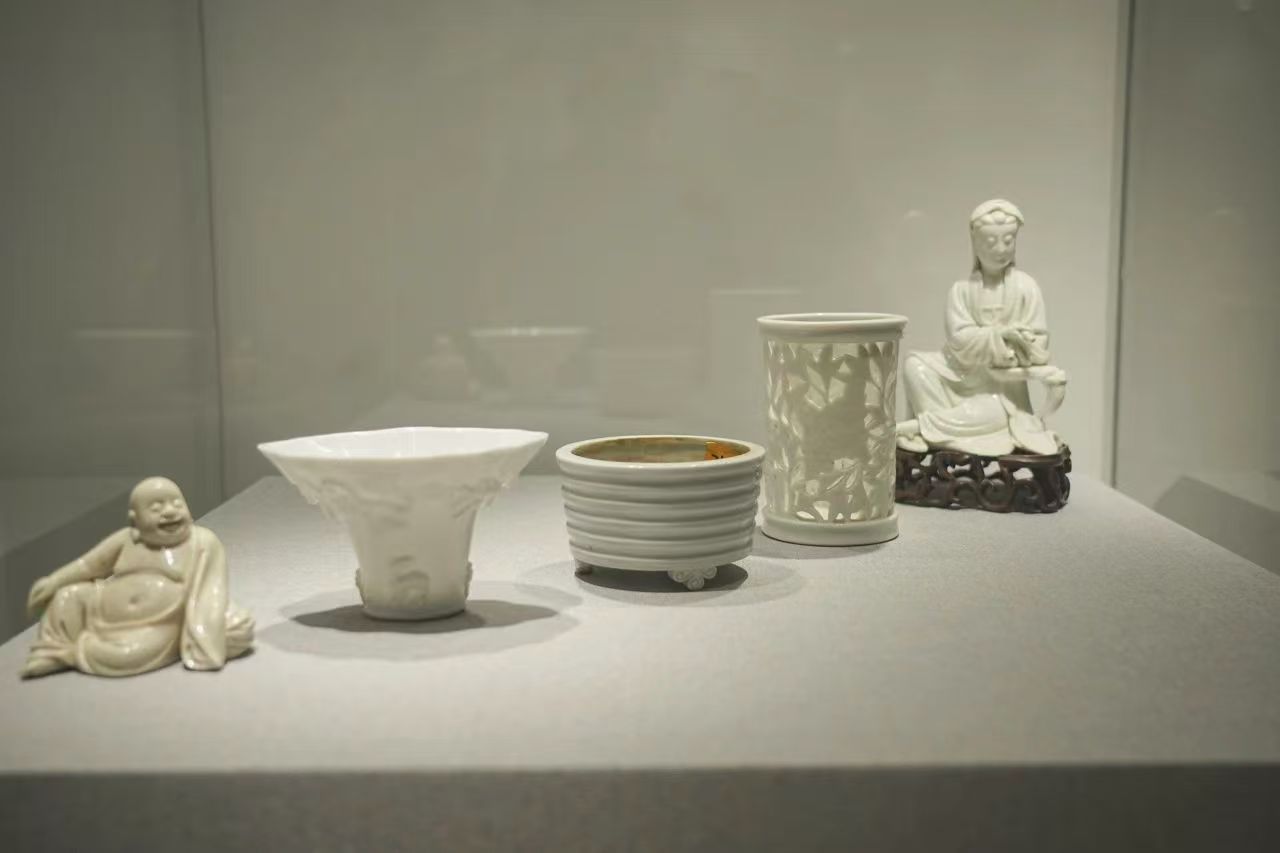
Image, from left to right: Ming dynasty Ivory-White Seated Maitreya, Ming dynasty Scallion-Green Dragon and Tiger Cup, Ming dynasty Duck-Egg Green Bamboo-Shaped Censer, Ming dynasty Child’s Red Stemmed Poem Cup, Ming dynasty Lard-White Guanyin Leaning on Deer
These two major exhibitions vividly illustrate Dehua’s determination to build “Blanc de Chine” into a leading cultural IP.
Blanc de Chine: From National Intangible Cultural Heritage to International IP
In 2006, the ceramic-making techniques of Dehua were included in the first batch of entries on China’s National List of Intangible Cultural Heritage, and Dehua white porcelain was also recognized as a protected product of national geographical indication.
In 2017, a Dehua white-glazed Guanyin statue created by Ming dynasty porcelain master He Chaozong was auctioned at Christie’s in New York for HKD 19.3 million [approx. USD 2.47 million], setting a record for Dehua white porcelain.
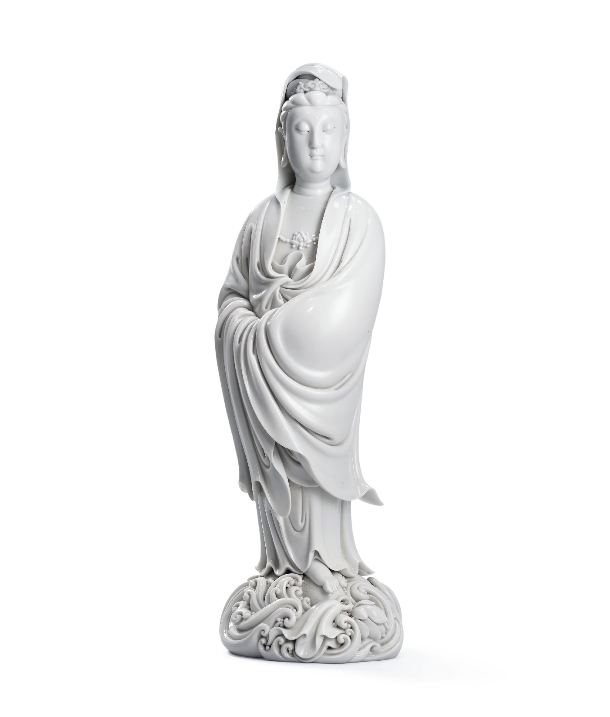
Image: Dehua White-Glazed Guanyin Crossing the Sea, attributed to He Chaozong
In addition to sculptural works, Dehua white porcelain’s daily-use and ceremonial vessels also reflect exquisite craftsmanship, combining practical functionality with artistic value.
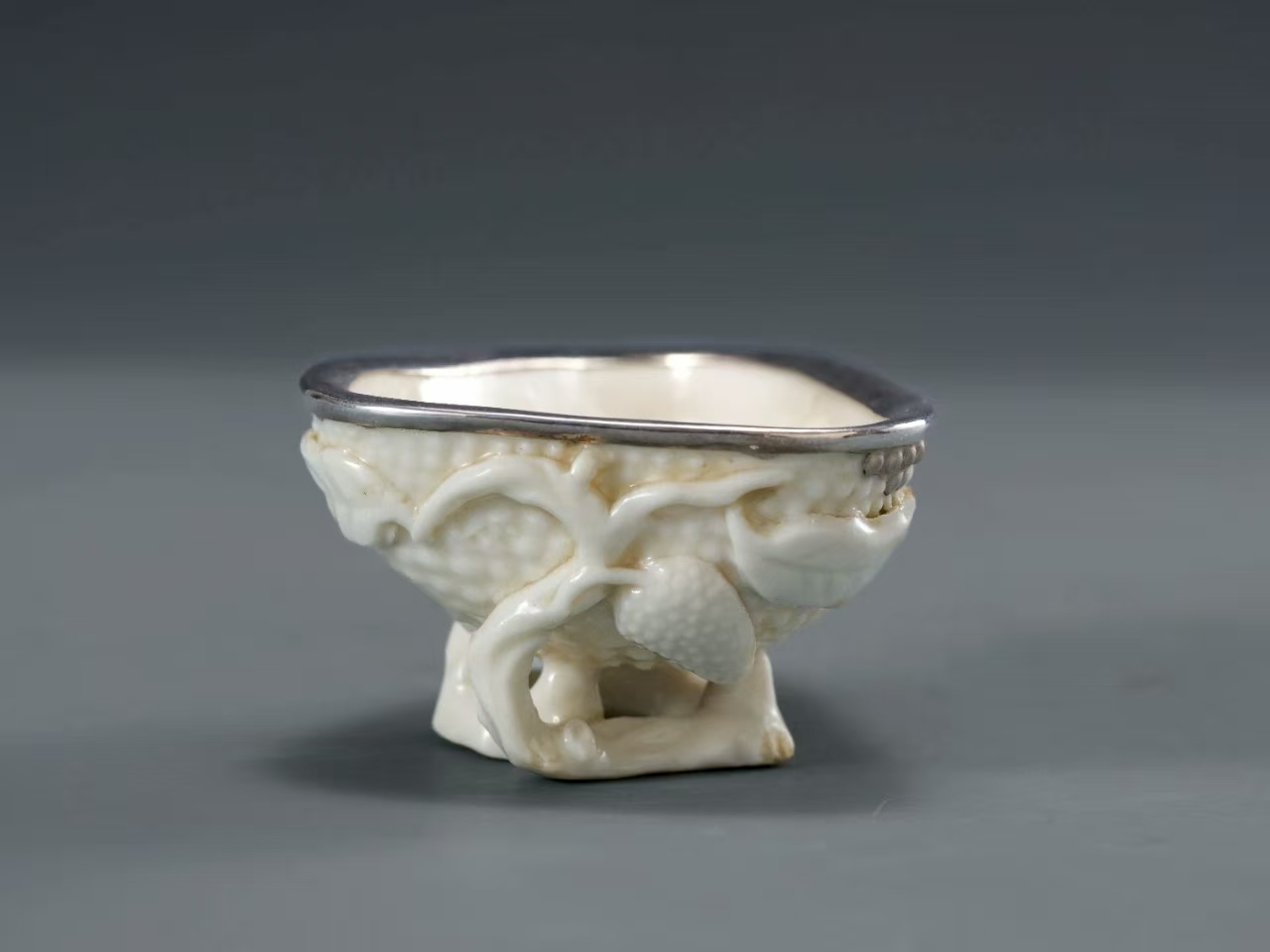
Image: Ming dynasty White-Glazed Litchi-Shaped Brush Washer
In modern times, Dehua white porcelain has continued to evolve by integrating traditional techniques with rich cultural heritage and Eastern aesthetics, steadily enhancing the appeal of “Blanc de Chine” as an international IP.
In 2010, a white porcelain piece carved into the shape of a cauldron by Chen Renhai was showcased in the Fujian Pavilion at the Shanghai World Expo as a tribute to the event. Inspired by the Chinese tradition of casting bronze cauldrons to commemorate a prosperous era, the piece also embodies the spirit of the Olympics and the Expo. Crafted from Chen Renhai’s exclusive naturally refined Dehua white porcelain clay, the cauldron’s four sides feature relief carvings of mythical beasts, with Olympic sports engraved in intaglio. The interior and surface are hand-decorated with tens of thousands of porcelain flowers, delicately layered and as thin as cicada wings. The piece combines multiple techniques and took over three years to complete, from design to successful firing.
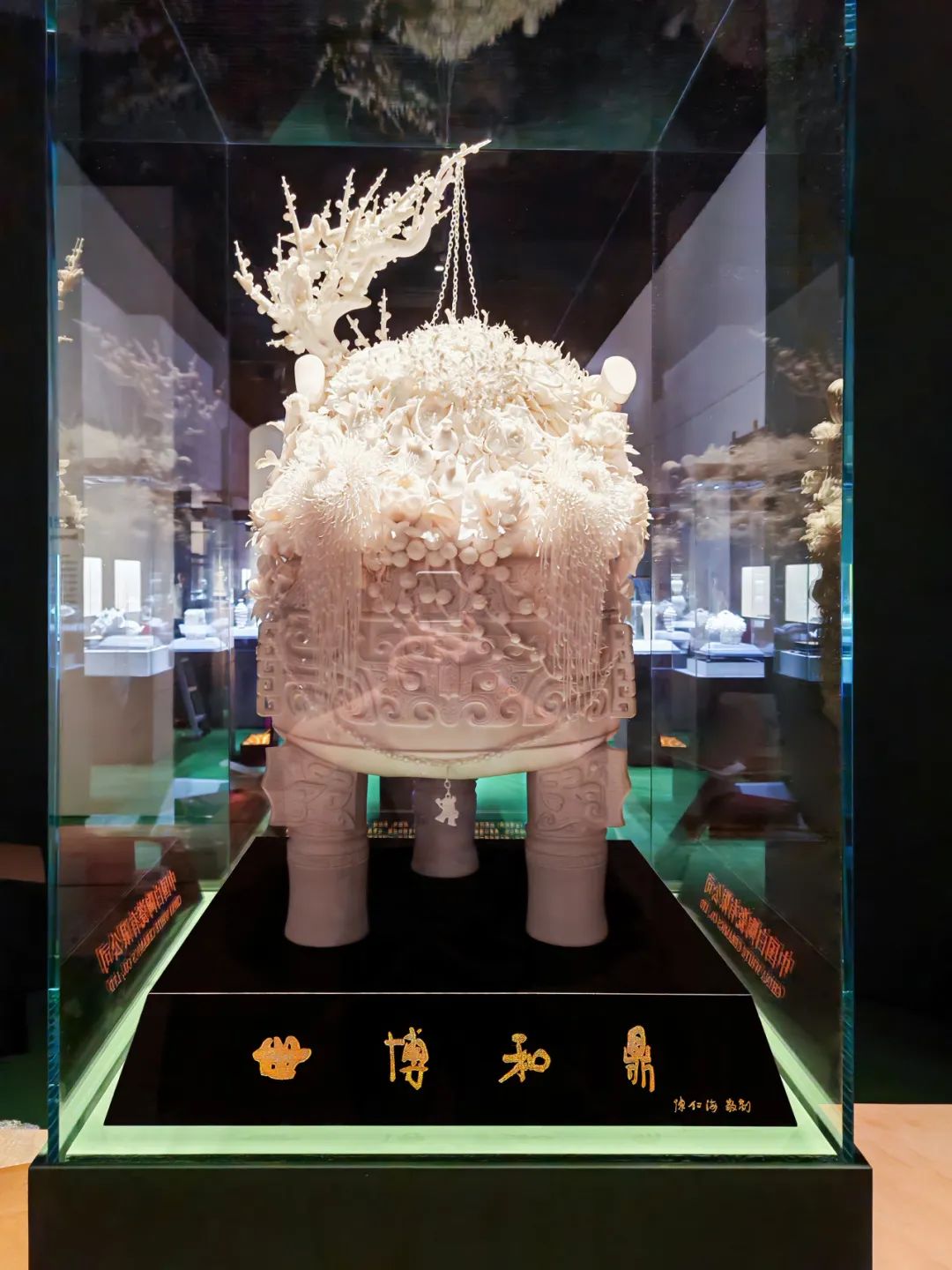
Image: A white porcelain piece carved into the shape of a cauldron by Chen Renhai, Master of Arts and Crafts of Fujian Province
Last year, Dehua ceramic master Lian Deli’s piece “Myth” was officially added to the collection of the National Museum of China. Inspired by the character Princess Ok-Soo from the film The Myth, the work employs Dehua’s signature “high-toughness thin-body porcelain robe technique,” precisely controlling the porcelain robe thickness to 0.2 millimeters. This allows the rigid ceramic to achieve the graceful fluidity of sheer fabric, perfectly capturing the charm of Eastern aesthetics.

Image: “Myth” by Lian Deli, a representative inheritor of the Dehua ceramic-making tradition
In early 2024, Dehua County successfully registered the “Blanc de Chine” trademark in Spain, laying a solid foundation for the global expansion of the “Blanc de Chine” brand.
Three Pillars of Dehua’s Porcelain Industry Target RMB 100 Billion Output
According to Economic Daily, the output value of Dehua’s ceramic industry has grown from RMB 12.68 million [approx. USD 1.74 million] in 1978 to RMB 50.2 billion [approx. USD 6.89 billion] in 2022. In March 2023, Dehua County released the Five-Year Action Plan for High-Quality Development of the “Blanc de Chine · Dehua Porcelain” Industry, aiming to further upgrade the ceramic sector and surpass an industrial cluster output of RMB 100 billion [approx. USD 13.72 billion] by 2027.
The government work report released in January 2025 stated that, as of 2024, Dehua’s ceramic industry cluster had reached a scale of RMB 66.3 billion [approx. USD 9.1 billion], marking a year-on-year growth of 15%.
Currently, ceramics account for three-quarters of Dehua County’s economy, with a diversified industrial structure spanning export-oriented decorative porcelain, household ceramics, master-crafted art porcelain, high-tech ceramics, sanitary ceramics, and construction ceramics:
Export Decorative Porcelain (approx. 60%):
Products are exported to over 190 countries and regions, making Dehua the largest production and export base of ceramic handicrafts in China, and a nationally recognized quality and safety demonstration zone for ceramic exports.
Daily-Use Household Ceramics (approx. 30%):
Dehua leads the nation in the production of ceramic teaware and flowerpots. Notably, its ceramic teaware accounts for more than 80% of the domestic market share.
Master Art Porcelain (approx. 8%):
Though its output value is relatively small, it holds immense artistic and cultural significance. Dehua is home to over 6,000 skilled ceramic artisans and 333 officially recognized masters at or above the municipal level, including 13 national-level masters.
Several Dehua-based enterprises have already demonstrated the capability to produce hit products, with individual white porcelain cultural and creative items generating online sales in the tens of millions of RMB. However, company leaders have also acknowledged challenges in brand building: weak awareness of brand protection and frequent instances of plagiarism have pushed companies into passive price wars.
To address these issues, Dehua’s judicial authorities have actively advanced creative copyright protection. At the end of 2024, they established a rapid response intellectual property protection center dedicated to the ceramic industry. In May 2025, Dehua hosted an “Intellectual Property Awareness Week” event, which was attended by officials from the China National Intellectual Property Administration.
Currently, Dehua accounts for nearly 40% of all annual copyright registrations in Fujian Province and has ranked first among all counties (cities and districts) in the province for 20 consecutive years. Over the past decade, more than 200,000 copyrights for ceramic works have been registered.
The allure of “Blanc de Chine” has also translated into robust growth in cultural tourism. According to the latest data from Dehua’s Bureau of Culture and Tourism, the county received 6.98 million visitors and generated RMB 6.82 billion [approx. USD 936 million] in tourism revenue from January to June 2025, representing year-on-year increases of 11.74% and 12.24%, respectively. During the May Day holiday alone, Dehua welcomed 794,700 visitors and recorded tourism revenue of RMB 653 million [approx. USD 89.7 million], marking astonishing year-on-year increases of 73.47% and 79.4%, setting a new seasonal record.
Strengthening Cultural Ecosystem and Promoting Cross-Border Exchange
With strong local government support, the cultural ecosystem surrounding “Blanc de Chine” has become increasingly rich and multidimensional.
In 2016, the inaugural “Blanc de Chine” International Ceramic Art Award was established. Now in its fourth edition, the event is co-organized by the People’s Government of Quanzhou, the People’s Government of Dehua County, the Yinglan Group, and the Sino-French Cultural and Art Research Center, with support from the Western Returned Scholars Association. Its goal is to bring together leading global artists to explore the dimensions and depth of ceramic art. To date, the award has attracted thousands of artists from over 60 countries and regions.
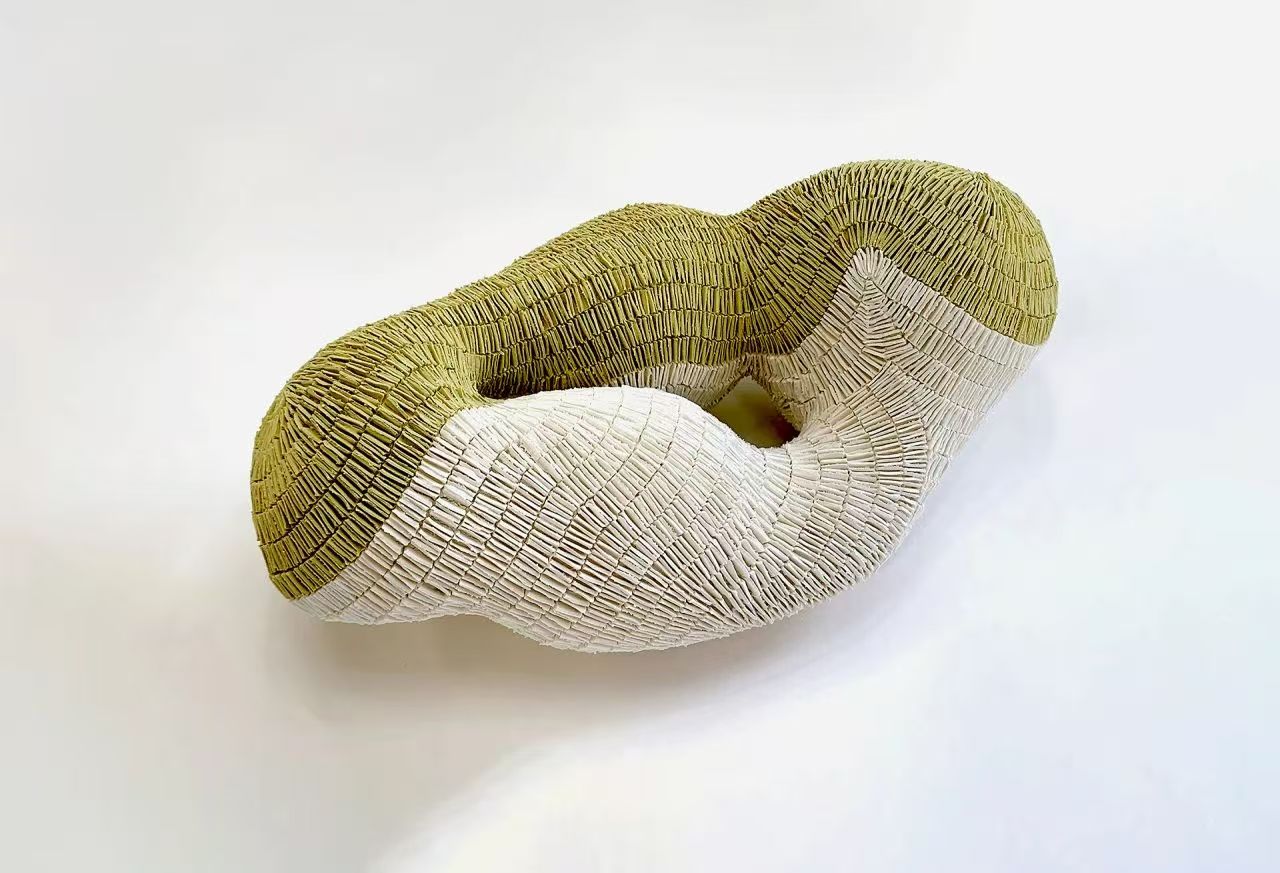
Image: First Prize of the 3rd “Blanc de Chine” Award — Connected by Tinne Debruijne, 2021
Since the beginning of this year, exhibitions themed around “Blanc de Chine” have been held both domestically and internationally:
-
In January, the Radiance of Porcelain and Jade: Dehua Kiln World Heritage Cultural Exhibition was held at the Guangxi Museum of Nationalities, while the Pure and Infinite was staged at the Hebei Museum.
-
Just before the Spring Festival, the Blanc de Chine: The Art of Dehua White Porcelain from China opened at the China Cultural Center in Kuala Lumpur, Malaysia, and was later displayed in May at the State Academy of Fine Arts of Turkmenistan.
-
From July 10 to 11, a Dehua porcelain exhibition themed on “Blanc de Chine” was held alongside the ministerial sub-forum “Civilizational Exchange and Cultural Inheritance and Innovation” during the Global Civilization Dialogue at the Great Hall of the People in Beijing.

Image: Dehua’s “Blanc de Chine” porcelain exhibition outside the Global Civilization Dialogue’s ministerial sub-forum. Pictured: Heavenly Horse, modeled after the Akhal-Teke horse of Turkmenistan. Photo by Han Yu, China News Service
Fang Junqin, Secretary of the CPC Dehua County Committee, stated that the “Blanc de Chine” global expansion plan will continue. Over the next five years, Dehua porcelain will travel to more than 20 countries worldwide, further fulfilling its role as a “messenger of global cultural exchange.”
| Sources: Economic Daily; Quanzhou Evening News; China News Service; Official website of the China National Intellectual Property Administration; Official website of the People’s Government of Dehua County; Minnan Net; Department of Culture and Tourism of Guangxi Zhuang Autonomous Region; China News Service
| Image Credit: WeChat public accounts of “Tsinghua University Art Museum,” “China Art Museum,” “BlancdeChine,” Jinjiang Economic Daily; China News Service; personal WeChat account of Chen Renhai
| Editor: LeZhi
Luxe.CO Oriental Aesthetics Division
The Luxe.CO Oriental Aesthetics Division focuses on the unique heritage industries that embody China’s millennia-old culture, including silk, porcelain, tea, and bamboo. It is committed to helping high-level industry readers gain a deeper understanding of the richness and vast potential of Oriental aesthetics and jointly explore ways to rejuvenate and modernize these sectors.
In addition to consistently publishing original, high-quality content, Luxe.CO will also launch a series of thoughtfully curated cultural and industry events, including heritage tours, forums, workshops, and cultural art exhibitions. Spanning culture and commerce, materials and craftsmanship, history and the present, China and the world, it seeks to holistically explore and interpret the essence of tradition through a new lens.
Contact: east@luxe.co


